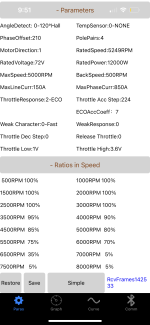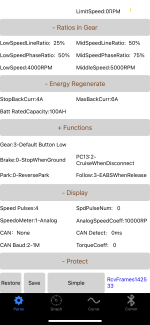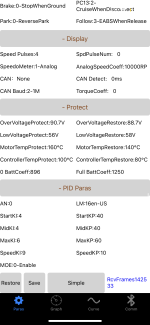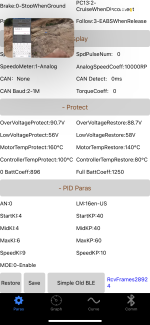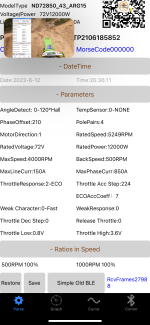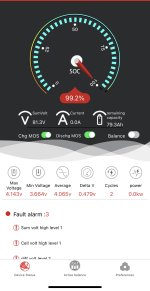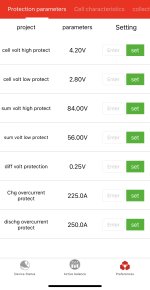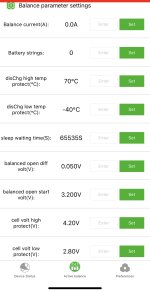Do you mean the BMS is rated 150A? (Ah is a unit of capacity, not current, so a BMS cannot have an Ah rating, only the cells or the pack as a whole)
What A (not Ah) are the cells in the battery rated for? The BMS (and the controller) need to be set to prevent drawing any more than that, preferably significantly less to keep from stressing them.
Note that if the BMS is rated for 150A, and you are potentially pulling 250A from it via the controller (line current setting), then you are probably going to blow up the BMS if it hasn't already been damaged by the nearly double current flow that it was designed for. (the failures are usually that the FETs fail stuck on, so the BMS can't turn off discharge and stop further draining when there is a problem).
If the BMS is rated the same as the cells, then you're also killing the cells.
To correct this you'd need to set the "line current" (battery current) to less than the BMS's (and cells') max current capability, so you aren't stressing them. (these ratings are usually already the absolute max, with no safety margin given, so running them at that max is as likely as not to cause a failure).
FWIW, bench testing is doing a test "on the bench" so in your workshop, lab, etc. rather than an actual on-ground/on-road/in-use test. If you rode it out on the road, ti's called a "road test".

That could mean you have mismatched cells such that some have less capacity than others, probably a lot less if it had 60% left, so they dropped below LVC and triggered the BMS to shut off it's output (if power completely shut down) or the pack as a whole dropped below the controller's LVC and the controller shutdown.
Or perhaps the controller's LVC is set too high for the pack type and voltage; usually you'd set it (for LiIon) to about 3.1-3.3v/cell (or around 2.8v/cell for LiFePO4).
Or whatever it is that tells you you still had 60% is not correctly setup for the actual battery you have.
If it really had 60% of 80Ah left, it means it had 48Ah left. If you only went 37 miles, then that means around 32Ah took you 37 miles, which is probably not the case. A quick and dirty guesstimate with a simulator shows that at 45mph on flat terrain with no wind and good road conditions and not in stop/start traffic it should take about 110-120Wh/mile to do that. A 72v pack at 80Ah is about 5760Wh. 40% of that is 2304Wh, and 2304Wh / 37 miles = 62wh/mile. 120Wh/mile x 37 miles is about 4400Wh, which is over 76% of your pack. Non-flat roads, or headwinds, or having to stop and start again in traffic, will all make your Wh/mile usage go up.
To get more distance you have to use less power, which means going slower and accelerating less hard. So you'd have to turn down the current (which you should cut in half, or less, anyway, to protect your battery from destruction since it isn't capable of what you're asking of it at present).


